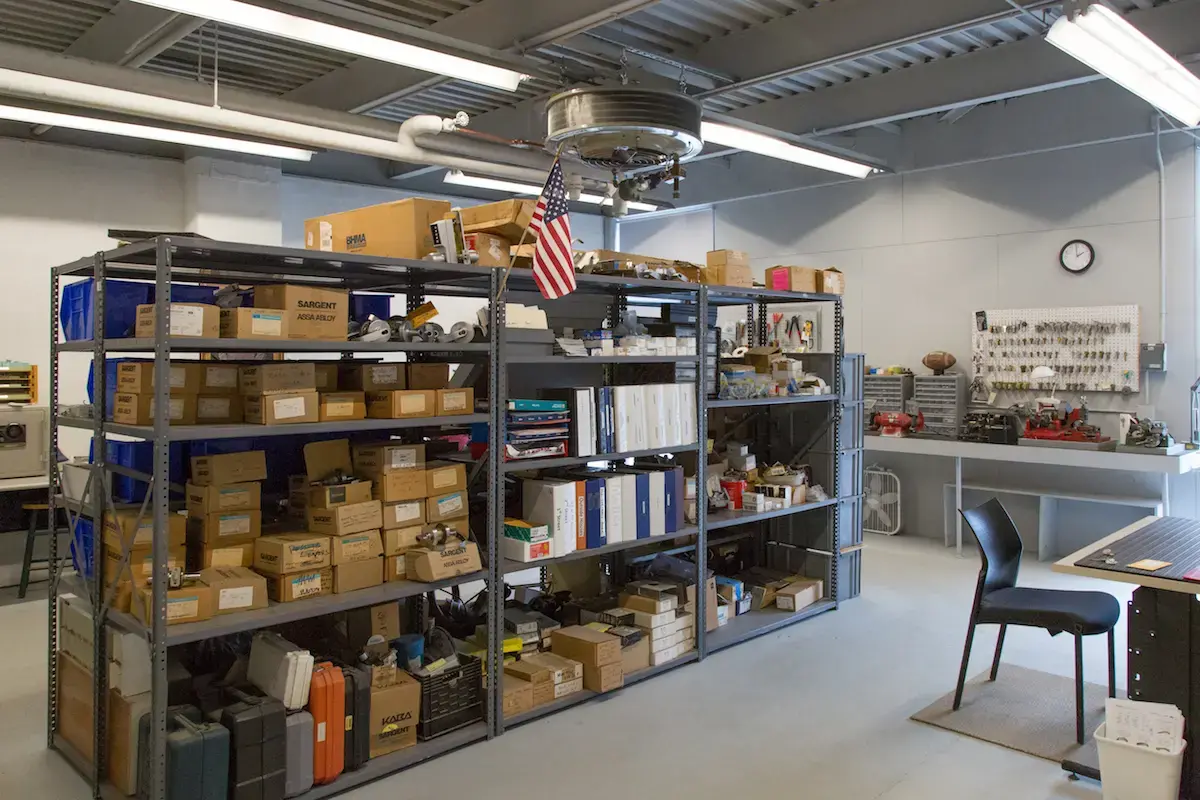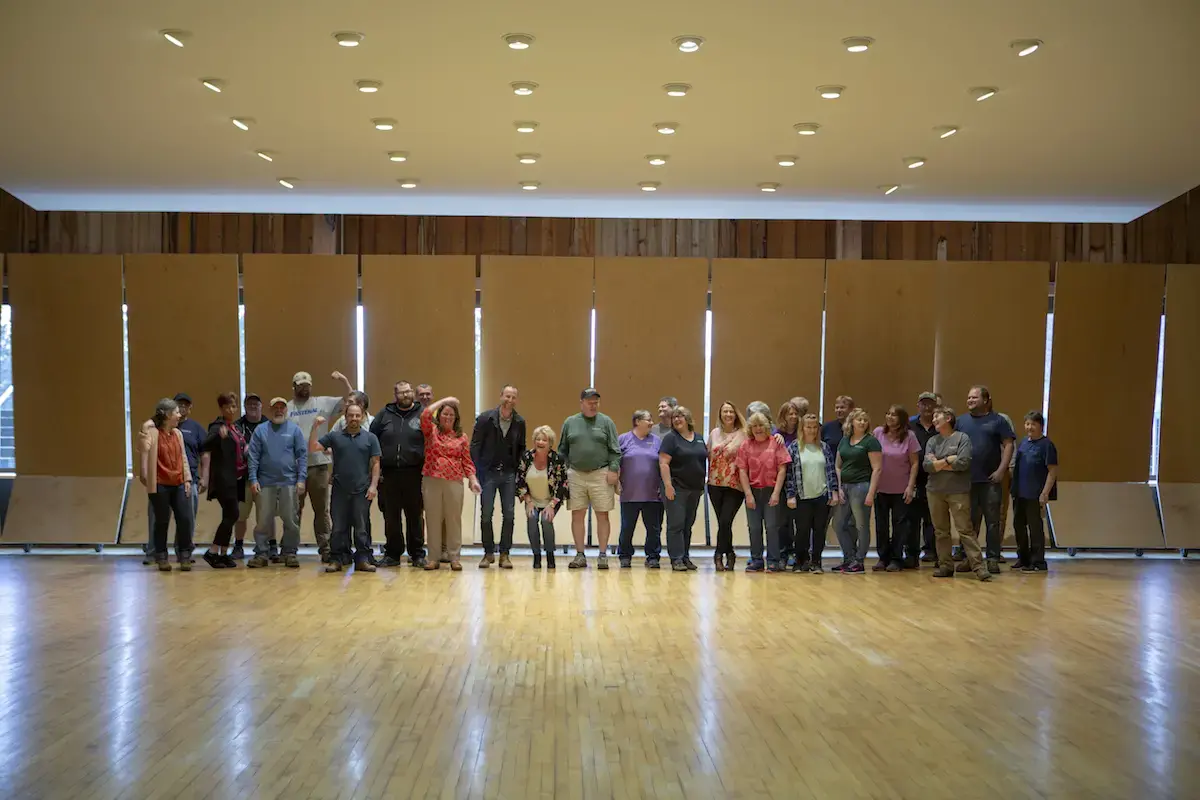At Buildings & Grounds
A story about “The Guardians of Bennington” by Jeva Lange ’15

A hog's head in the refrigerator. A gigantic wooden pipe organ with real ivory keys, dislodged from a dusty, long-forgotten storage space. A squirrel skittering helter-skelter through the attic of the Barn, its feet making a frenzied rat-a-tat across the wood. The lobster—oh boy, the lobster. They’ve seen it all.
They are the army waging a war against dry rot and leaks and that mightiest enemy of them all: Time. “The guardians of Bennington,” Kilpatrick Fellow for Buildings & Grounds Dane Whitman ’16 calls his colleagues in Penny Wilson Buildings & Grounds, a rather lofty term for a group who, in the same breath, he describes as “actual, true people.”
You might forgive the mythologizing, though. Ranging from architects to plumbers to managers and groundskeepers, a core team of about 40 or so people is responsible for the taming of all the 440 acres of uncooperative Vermont mountainside—hills and wetland, woods and Commons Lawn—as well as some 60 odd buildings, the oldest of which predates the Civil War. Their task, which is so outwardly simple that it can be explained as “making stuff work,” is in practice nothing less than Herculean.
There may be no job harder than making stuff work, after all. The drafty clock over Commons welcomes gusts of bitter winter cold that for years had to be fended off by a 1930s heating system. The Orchard Houses are also lacking in basic insulation and Jennings still uses something like 10,000 gallons of fuel oil in a year to remain habitable.
“There’s this huge tension between the architecture, between the historic and the modern,” explains project manager Holly Andersen, a true proselytizer of the Buildings & Grounds department if there is one. She describes her job as involving everything from managing the Commons renovation to reviewing “all the nuts and bolts and fabric swatches and paint chips” that go into a house. She also possesses the rare and enviable gift of making steam lines and pumps sound exciting when she gets on a roll.
Andersen is a green-energy enthusiast (although she laughs off the phrase, preferring terms such as “efficient”), so it might come as a surprise that she will be the first to tell you “aesthetics matter. There are a lot of high-efficiency light fixtures out there that we would totally love to use, but they’re ugly, so we’re not going to, ’cause it’s Bennington.”
The Associate Vice President for Facilities Management and Planning, Andy Schlatter, is a licensed architect who will casually lapse into talking about the beautiful “volumes of the sloping roofline” on the third floor of Commons with such love and appreciation that you almost forget it’s his job to oversee the technicalities of the massive college-wide department. He feels the same way as Andersen: “The reason we are all drawn to this place and love it is the character that all of these buildings have,” he says.
The demands of the job are manifold, though. “The range of things we deal with here is so great, from the power going out or the boiler malfunctioning and not being able to deliver heat to a good portion of the campus, which is grand scale stuff, down to the minutia of, like, there’s a bat in the Office of Student Life,” Schlatter adds (and yes, that’s happened).

Operations manager and conference services coordinator Angel Kwasniak and her staff of 36: 16 craftspeople, 19 housekeepers, and one management assistant are often on the frontline of addressing those minor emergencies. Her team, which does everything from maintenance to housekeeping, has additionally taken on special “in-house projects” as a kind of challenge. “In the past we were more routine maintenance, work orders, plugged toilet, fix the ceiling, change a lightbulb, those kinds of things,” Kwasniak said. “Now we’re getting more in-depth with projects and not outsourcing as much.”
For the staff of Buildings & Grounds, the work is personal. How could it not be, when there are some 6,200 work orders processed by the department, on average, in-house every single year? “There’s always something going on, there’s always a problem somewhere, there’s something that needs to be fixed constantly,” says Todd Siclari, the systems manager—not as a complaint, but rather as a matter of fact.
Of course, maintaining a space primarily occupied by a bunch of young adults who are living on their own for the first time often means a lot of good-natured eye rolls. “When I started working here, I could hear staff people and people in Buildings & Grounds referring to the students as ‘kids,’” says Whitman, the Kilpatrick fellow who will soon be departing for a job at MSK Engineering & Design in downtown Bennington. “As a student I would have found it really paternalistic, but it really makes sense that they call us kids, from the beautiful love-hate relationship of mostly cleaning up after our messes and fixing whatever we might have broken.”
Lynn Harrington is the management assistant who fields every single work order that comes into the department, and she has been with Buildings & Grounds for more than two decades. She shrugs off the suggestion that college students might wear you down with all their antics—“if you keep showing up here for 21 years, you must like what you’re doing,” she points out.
Perhaps nothing encapsulates the take-it-in-stride mentality of Buildings & Grounds better than when she tells the lobster story. It goes something like this: The school had hired a new plumber, who within days on his new job was called to the Kilpatrick house to fix a clogged toilet. What he didn’t understand until arriving, though, was what was propped up in the toilet was a lobster.
Harrington can barely get through telling the story without laughing. She says she joked to the baffled plumber that it was his “initiation.” The staff who have been around the longest all have these kinds of stories.
Like every job, there are the bad days, sure. But who could ask for a better group to pull through it with? Whitman admits he got his first cavity this past year because of all the desserts foisted onto him by the staff, who he describes, almost embarrassed by the cliche, as his “family.” From his desk in Penny Wilson Buildings & Grounds, he watches the day-to-day goings-on like it’s a sitcom. You just can’t have such a job without a sense of humor.
“I have a love and appreciation for Bennington, and it doesn’t matter who it is—whether it’s students, staff, or faculty,” Kwasniak says. “I want to do my best and do a good job at what I’m doing regardless. Not to say I’m never going to fail: I’m going to fail. But I want to make the experience here the best that it can be for people.”
Harrington puts it another way: “We always get it done. Somehow, we always get it done.”